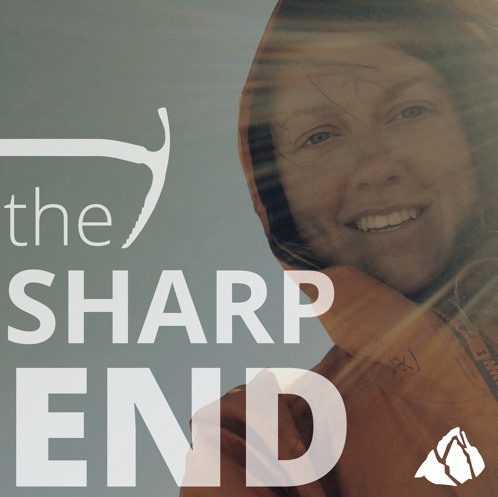Dehydration—Exhaustion, Minor Frostbite, Climbing Too Slowly—Failure to Turn Back, Alaska, Mount McKinley, Messner Couloir
DEHYDRATION–EXHAUSTION, MINOR FROSTBITE, CLIMBING TOO SLOWLY-FAILURE TO TURN BACK
Alaska, Mount McKinley, Messner Couloir
At 0500 on June 3, Jan Markup (27), Petr Hoffman (27) from the Czech Republic, and Camelo Lopez from a Colombian-American expedition, who had asked to climb with the Czechs, left the 14,200-foot camp to attempt the Messner Couloir from which the Czech “Cheechakos” had been turned back by poor snow conditions a few days earlier. They moved very slowly all day and reached the top of the steep part of the couloir approximately 2200. They still had a rocky exit to negotiate but at an easier angle than the main couloir.
On June 4, Natalie Lopez from the Colombian-American team came to the 14,200 foot camp and stated that the party in the Messner Couloir was in difficulties. She was in contact with the party via a talkabout radio. When Ranger Evans contacted Camelo Lopez, he stated that he had frostbitten his feet and was hypothermic but that the other two were ok. At 0256, Evans asked Lopez if they could make it over the top of the Couloir to the Normal West Buttress Route to descend, as no rescue would be able to reach them for at least eight hours. Lopez agreed to try and it was arranged for them to check in every 30 minutes.
At 0338, Jan and Petr stated that Lopez could not move and was not coherent, and that they could not get him any higher up the couloir. They said they would try to get food and water into Lopez and hold their position. At 0414, Jan and Petr stated that Lopez had stopped talking, he has very cold, probably frostbitten, feet, and was in a bad way. They were still trying to get food and water in to him.
At 0426 South District Ranger in Talkeetna was informed of situation. At 0444, Lopez sounded moderately sensible on the radio, stated that his feet were frozen (white and waxy), and that one of the others had frostbite on his hands. They cannot move from their location due to the steepness and their condition.
At 0523, Jan reports that Lopez was deteriorating again. They are still drinking warm liquids but Lopez has vomited. At 0540 Lopez reports that they were having trouble maintaining. An overhead team was assembled in Talkeetna at 0545, and a briefing on the situation given to them.
At 0609, Lopez stated that his legs would not work, and at 0630, Lopez stated that he did not think that they can last more than an hour. They are told to stay focused and to make sure harnesses etc. are on correctly. Asked if Jan and Petr can walk down safely if Lopez is evacuated, they reply that they do not think that they can make it down safely, as they are now cold and exhausted.
At 0700, plans were discussed with Talkeetna for a possible helicopter evacuation. At 0752, rangers at the 14,200 foot camp were still trying to persuade Lopez and Hoffman and Markup to walk. Lopez says pain is still too much to walk and Hoffman and Markup are to exhausted to walk down safely.
At 0936, the Lama takes off from Talkeetna and at 1020 does a reconnaissance flight over the evacuation site and the crew decided to use the rescue basket. At 1051 the Lama picks up Lopez and returns him to Base Camp, then returns twice to pick up Jan and Petr and fly them to Base Camp by 1150.
Patient assessments after arrival at Base Camp: Camelo Lopez—minor frostbite to toes, possible AMS, dehydrated, hypothermic and exhausted. Jan Markup—exhaustion, dehydrated. Petr Hoffman—exhaustion, dehydrated.
Analysis
This incident was the result of a lot of small mistakes compounding themselves and creating a major problem. Mistakes included adding an extra person to the team at short notice, especially a person of unknown ability; the fact that three people do not move as quickly as two; the fact that each person had only two liters of water and did not stop to make more until problems started; and perhaps most significantly, climbing very slowly (17 hours from camp to the top of the difficulties) and not making a decision to turn around.
Although it is a good idea to have the means to contact other people, in this case “Talkabout” radios, one cannot help but wonder whether this also gives parties an easy way out; that is, to call for rescue sooner than really needed or to continue in the belief that with communication they have a safety net and therefore continue when they should consider turning around. If this party had not had the means to contact the Rangers, would they have been able to get themselves to safety or would things have been made worse? A question we will never be able to answer. However, the Rangers responded (as they should) on the strength of the information (sometimes suspect) received over the radio, asking the helicopter crew to perform a risky operation at an extremely high altitude (19,000 feet), but it could easily have been a ground team at risk executing a potentially hazardous rescue. It is incumbent on all climbers to assess the possibility of self-evacuation/rescue before requesting outside assistance, especially before they even start on a climb as committing and remote as the Messner Couloir.
As a footnote, it is worth noting that the Talkeetna Ranger Station is reviewing its rescue policies. At present it is expected that if a party is rescued, they will not just be allowed to continue climbing, but rather, be returned to Talkeetna for a thorough debrief. This is both to ascertain all the facts of the case and insure the physical well being of all parties concerned. (Source: Ranger John Evans)

